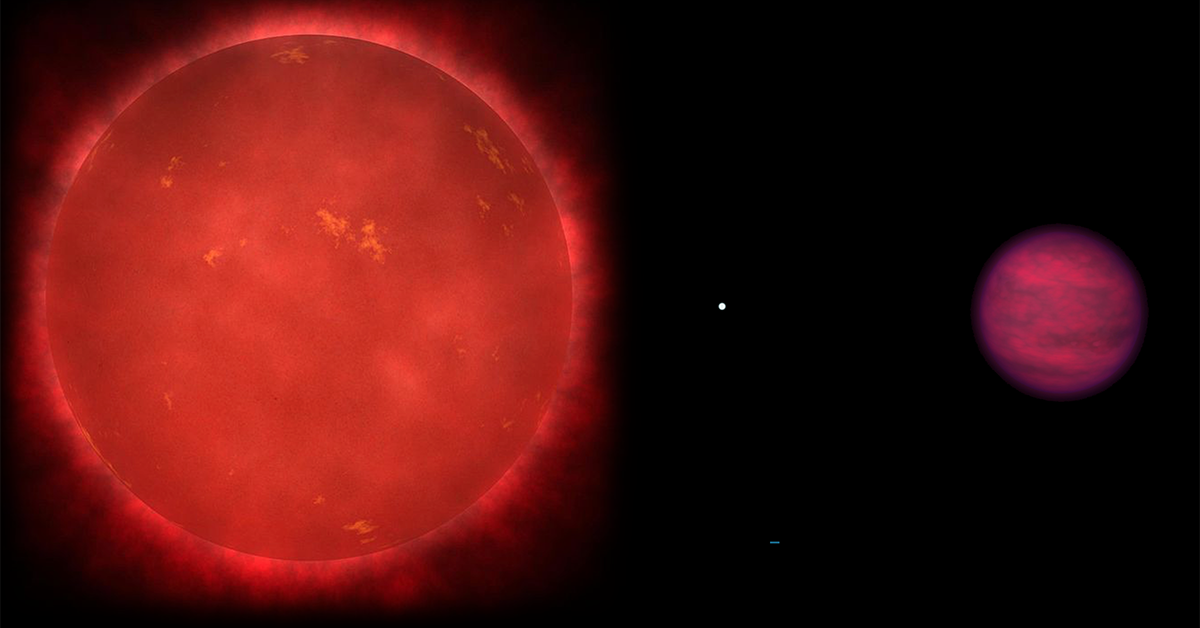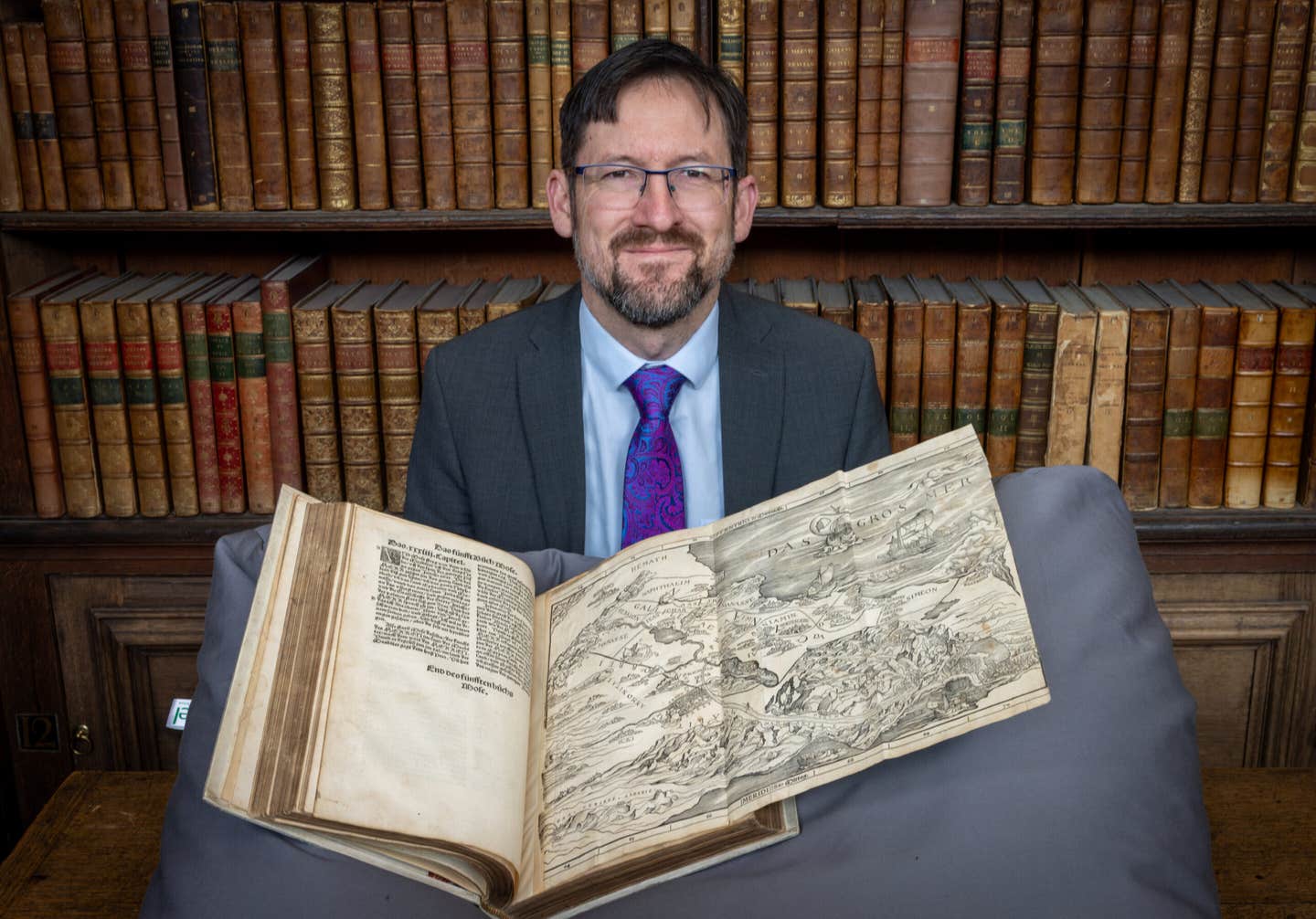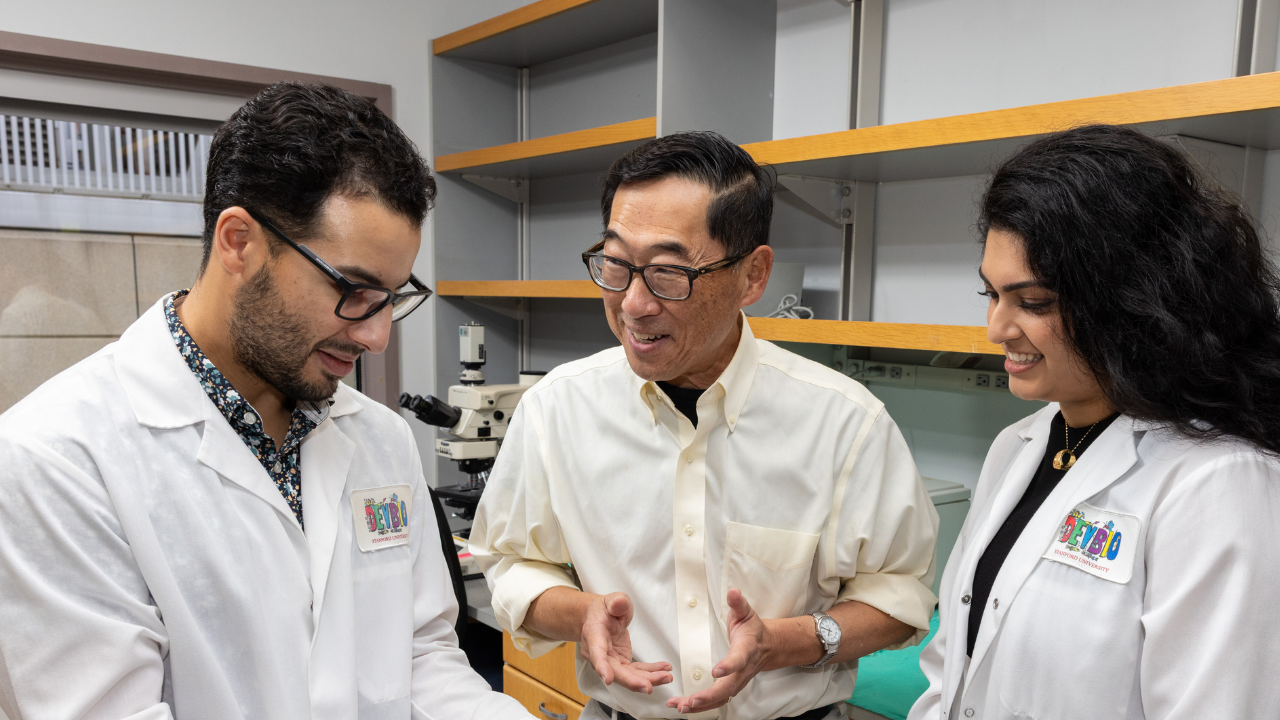JWST detects phosphine gas in the atmosphere of brown dwarf star, stunning astronomers
Astronomers using JWST have found phosphine gas in the atmosphere of the brown dwarf Wolf 1130C.

JWST finds phosphine gas on ancient brown dwarf star Wolf 1130C. (CREDIT: Adam Burgasser)
When astronomers pointed the James Webb Space Telescope (JWST) at a faint object orbiting a distant star system, they weren't expecting to find one of the universe's strangest chemical surprises—phosphine gas.
The discovery in the atmosphere of brown dwarf Wolf 1130C overturns decades of supposition about how phosphorus would act in space. It could alter the way scientists interpret potential signs of life elsewhere in the universe.
A "Failed Star" With a Hidden Signature
Wolf 1130C is located approximately 54 light-years away in the Cygnus constellation, around a duo of stars—a cool red dwarf and a compact white dwarf.
Brown dwarfs such as this one are also referred to as "failed stars" since they're not large enough to continue hydrogen fusion, yet they exhibit traits with giant planets. Even though they are so faint, the infrared sight of JWST is strong enough to investigate their atmospheric chemistry in depth.
A team of global researchers, led by Adam Burgasser, a professor of astronomy and astrophysics at the University of California San Diego, used JWST's Near Infrared Spectrograph (NIRSpec) to analyze the atmosphere of Wolf 1130C. Much to their surprise, they detected unequivocal absorption lines of phosphine (PH₃)—a molecule consisting of one atom of phosphorus and three atoms of hydrogen. They reported their results in Science.
Phosphine: A Familiar Yet Puzzling Gas
Phosphine has previously been known to scientists. On our planet, it is an industrial byproduct and the product of decaying organic matter under anaerobic conditions. Within our solar system, it exists within the turbulent atmospheres of Saturn and Jupiter, where it is produced deep within the planets and then transported upwards by vertical convection. Outside of those two planets, it's rarely been found.
That's why this discovery was so shocking. Wolf 1130C is colder and less heavy-metal-rich—elements heavier than helium—than Saturn or Jupiter. In normal circumstances, these conditions would rule out phosphine from forming or existing. But JWST picked up its unmistakable chemical fingerprint, which suggests something out of the ordinary is happening in the brown dwarf's atmosphere.
Co-author Sam Beiler, Trinity College Dublin postdoctoral researcher, caught the wonder: "Every observation we've made with JWST has tested theoretical predictions—that is until we saw Wolf 1130C."
Solving the Chemical Puzzle
To translate the find, co-author Eileen Gonzales, an assistant professor of astronomy at San Francisco State, used a modeling technique known as atmospheric retrievals. By pitting JWST's infrared sightings against advanced simulations, she could "reverse engineer" the atmosphere's composition.
Her calculation showed phosphine at a concentration of around 100 parts per billion—exactly the concentration theoretical models had estimated would exist in such an environment but never before confirmed.
So why Wolf 1130C and not someone else? Part of the reason is the brown dwarf's low oxygen content. In metal-poor atmospheres, there is not enough oxygen present to tie up the phosphorus and make other compounds like phosphorus trioxide (P₄O₆).
This means phosphorus is available to combine with hydrogen and form phosphine. "In the metal-poor atmosphere of Wolf 1130C, there is not enough oxygen available to mop up the phosphorus, so phosphine can form," Beiler said.
A Heritage from Its Nearby Stars?
The Wolf 1130 system's local stellar neighborhood may hold the key as well. The white dwarf companion, Wolf 1130B, is the dense remnant of a previous giant star. As it evolved, it likely produced phosphorus by nuclear burning and delivered the element in its death spasms. Burgasser and his co-authors suspect that some of that phosphorus-rich material has been accreted by the nearby brown dwarf.
Although the system has not registered any nova activity in recent times, these types of eruptions—transient nuclear flares on the surface of a white dwarf—can repeat every few thousand years.
Had it occurred in the distant past, it could have also released phosphorus into the surrounding environment with the chemical imprint that still lingers today. Prior studies even suggest that much of the Milky Way's phosphorus may have been created through these types of stellar explosions.
Mixing, Movement, and Molecular Mysteries
The team models also highlight how vigorous activity in the brown dwarf's atmosphere could help preserve phosphine. Vertical mixing—the constant churning of gases from hot, deep atmospheres up to cooler high altitudes—could keep phosphine from breaking down. The same process retains phosphine in Jupiter and Saturn atmospheres, where it would otherwise be destroyed through chemical reactions and sunlight.
This finding suggests brown dwarfs and gas giants might share more similarities than have been suggested, despite how different they are in size, temperature, and chemical composition. It also pinpoints where our current understanding of phosphorus behavior in cold low-metal conditions is lacking.
As Burgasser captured, "Understanding phosphine chemistry in the atmospheres of brown dwarfs where we don't expect life is important if we are going to leverage this molecule in the search for life on terrestrial planets outside our solar system."
Rethinking a Biosignature
Phosphine hit the headlines in 2020 when scientists reported it in Venus' atmosphere—a discovery that sparked controversy regarding whether the detection could foretell microbial life. Subsequent studies threw doubt on that detection, but controversy regarding phosphine as a biosignature remained.
Now, with JWST confirming phosphine in a deceased brown dwarf, the case becomes more nuanced. If phosphine occurs naturally in non-biological contexts, then it may not be quite as definitive a sign of life after all. These new findings strengthen the necessity of knowing a planet's broader chemical context before making any conclusions about biology.
A Milestone for JWST and Open Science
This discovery showcases JWST's unmatched ability to record faint molecular signatures in distant planets. The research was based on decades of groundwork—atmospheric models, radiative transfer codes, and databases of molecules developed by researchers like Marley, Freedman, Tennyson, and Yurchenko.
The research was supported by NASA, the Heising-Simons Foundation, the Portuguese Foundation for Science and Technology, and the UK Research and Innovation Council. Computational tools like the Sonora Elf-Owl+, Brewster, and UCDMCMC codes have been placed in the public domain, enabling other scientists to build upon it.
Apart from the chemistry, the research shows the power of collaboration. Astrophysicists, chemists, and modelers from all over the world combined their expertise to solve an atmospheric mystery that's pushing the community to rethink well-established assumptions.
Rewriting the Rules of Substellar Chemistry
Objects such as Wolf 1130C exist in a gray area between stars and planets. They're large enough to burn deuterium, a form of heavy hydrogen, on and off for a short while but not large enough to maintain nuclear burning. Their in-between nature makes them ideal laboratories in which to test chemical reactions under bizarre conditions.
The detection of phosphine in Wolf 1130C illustrates just how diverse these "failed stars" are. It opens up the possibility of other brown dwarfs, and even giant exoplanets, containing equally unexpected chemistries.
With subsequent JWST missions, more such discoveries could emerge, each adding a new piece to the jigsaw of how molecules are formed and survive in the universe.
Practical Implications of the Research
The study not only deepens our understanding of substellar chemistry but also redefines how scientists search for life. By determining that phosphine can occur in lifeless conditions, it favors a more restrained and nuanced explanation of chemical "biosignatures" elsewhere in the universe.
The findings will sharpen atmospheric models used in exoplanet science and improve future missions to discover life on other planets.
In a more general sense, this book makes connections between the evolution of the stars, the science of planets, and the chemistry behind life's necessary elements—reminding us that even unsuccessful stars hold secrets.
Research findings are available online in the journal Science.
Related Stories
- Astronomers find rare planet orbiting at 90 degrees around twin brown dwarf stars
- Dark dwarf stars lurking at the center of our galaxy could reveal the true nature of dark matter
- White dwarf duo reveals the origins of the universe’s brightest explosions
Like these kind of feel good stories? Get The Brighter Side of News' newsletter.
Joshua Shavit
Science & Technology Writer and Editor
Joshua Shavit is a Los Angeles-based science and technology writer with a passion for exploring the breakthroughs shaping the future. As a co-founder of The Brighter Side of News, he focuses on positive and transformative advancements in AI, technology, physics, engineering, robotics and space science. Joshua is currently working towards a Bachelor of Science in Business and Industrial Engineering at the University of California, Berkeley. He combines his academic background with a talent for storytelling, making complex scientific discoveries engaging and accessible. His work highlights the innovators behind the ideas, bringing readers closer to the people driving progress.



